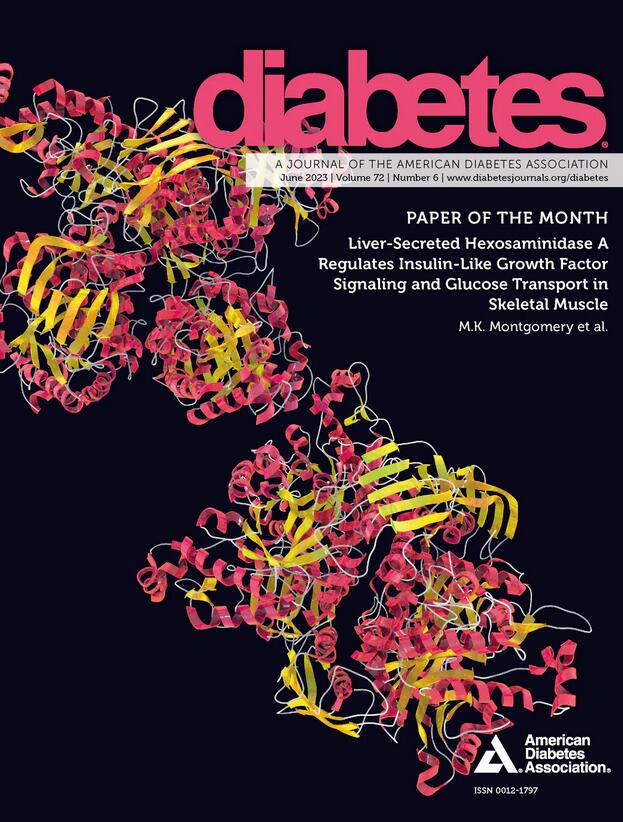BAP1 suppresses white adipose tissue browning and thermogenesis through deubiquitinating KDM1B
IF 6.2
1区 医学
Q1 ENDOCRINOLOGY & METABOLISM
引用次数: 0
Abstract
Obesity is a growing global health threat, and inducing browning of white adipose tissue (WAT) to increase energy expenditure has become an attractive strategy for treating obesity and related metabolic complications. BRCA1-associated protein 1 (BAP1), a ubiquitin C-terminal hydrolase (UCH) domain-containing deubiquitinase (DUB) expressed broadly across tissues, has previously been shown to play an important role in liver carbohydrate and lipid metabolism. However, its role in the browning of inguinal white adipose tissue (iWAT) has not been studied. Our study initially found that BAP1 expression was downregulated in cold-induced mouse iWAT but upregulated in obese conditions. Furthermore, overexpression of BAP1 in the inguinal fat tissue suppressed iWAT browning and thermogenesis. Mechanistically, we found that BAP1 interacts with KDM1B and stabilizes it through deubiquitination. Subsequently, KDM1B demethylates H3K4me1/2 modifications in proximity to thermogenesis-related genes, thereby inhibiting the expression of genes essential for browning. In summary, our study shows that BAP1 negatively regulates iWAT browning via a mechanism mediated by KDM1B.BAP1 通过去泛素化 KDM1B 抑制白脂肪组织褐变和产热
肥胖是一个日益严重的全球健康威胁,诱导白色脂肪组织(WAT)褐变以增加能量消耗已成为治疗肥胖和相关代谢并发症的一种有吸引力的策略。brca1相关蛋白1 (BAP1)是一种含泛素c端水解酶(UCH)结构域的去泛素酶(DUB),在组织中广泛表达,在肝脏碳水化合物和脂质代谢中起重要作用。然而,其在腹股沟白色脂肪组织(iWAT)褐变中的作用尚未研究。我们的研究最初发现,BAP1在冷诱导小鼠iWAT中表达下调,而在肥胖条件下表达上调。此外,BAP1在腹股沟脂肪组织中的过表达抑制了iWAT的褐变和产热。在机制上,我们发现BAP1与KDM1B相互作用,并通过去泛素化使其稳定。随后,KDM1B将产热相关基因附近的H3K4me1/2修饰去甲基化,从而抑制褐变所需基因的表达。综上所述,我们的研究表明BAP1通过KDM1B介导的机制负向调节iWAT褐变。
本文章由计算机程序翻译,如有差异,请以英文原文为准。
求助全文
约1分钟内获得全文
求助全文
来源期刊

Diabetes
医学-内分泌学与代谢
CiteScore
12.50
自引率
2.60%
发文量
1968
审稿时长
1 months
期刊介绍:
Diabetes is a scientific journal that publishes original research exploring the physiological and pathophysiological aspects of diabetes mellitus. We encourage submissions of manuscripts pertaining to laboratory, animal, or human research, covering a wide range of topics. Our primary focus is on investigative reports investigating various aspects such as the development and progression of diabetes, along with its associated complications. We also welcome studies delving into normal and pathological pancreatic islet function and intermediary metabolism, as well as exploring the mechanisms of drug and hormone action from a pharmacological perspective. Additionally, we encourage submissions that delve into the biochemical and molecular aspects of both normal and abnormal biological processes.
However, it is important to note that we do not publish studies relating to diabetes education or the application of accepted therapeutic and diagnostic approaches to patients with diabetes mellitus. Our aim is to provide a platform for research that contributes to advancing our understanding of the underlying mechanisms and processes of diabetes.
 求助内容:
求助内容: 应助结果提醒方式:
应助结果提醒方式:


